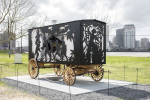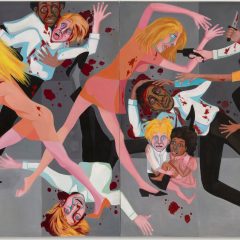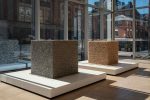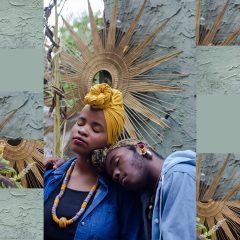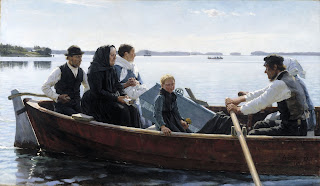
Albert Edelfelt (1854-1905)Conveying the Child’s Coffin (1879) oil on canvas, 120 x 204 cm, Ateneum Art Museum Central Art Archives / Hannu Aaltonen
‘Northern Stars and Southern Lights: The Golden Age of Finnish Art 1870-1920’
at the National Gallery of Ireland
In the visual arts the first Finns who come to mind are probably the architects Alvar Aalto and Eero Saarinen followed by a group of designers from the 1960s working for firms such as Marimekko, Ittala and Arabia, and more recently the video artist Elja-Lisa Ahtila and filmmaker Aki Kaurismaki. Yet the late 19th century is considered the golden age, when Finnish painters achieved recognition in Europe; they showed in Paris (at various salons from 1879 on, where they won medals, and in the 1900 International Exposition where they had their own pavilion), Berlin and Venice, where Akseli Gallen-Kallela had his own section in the 1914 Biennale. Since then the paintings have remained more or less sequestered in their homeland. The National Gallery, London purchased a wonderful landscape by Gallen-Kallela in 1999 (below) which certainly brought him to wider attention, but his first monographic exhibition beyond Scandanavia was in 2006. The first European retrospective of Helene Schjerfbeck’s work was in not until 2007 although the National Academy of Design in New York devoted a solo exhibition to her in 1992.
The exhibition of 74 paintings and small selection of prints, Northern Stars and Southern Lights: The Golden Age of Finnish Art 1870-1920 at the National Gallery of Ireland (through Feb. 1, 2009) was a revelation and merits a wider audience. The work displayed a remarkable level of quality; a number of the painters were distinctive colorists and their work as a whole adds another chapter to the 19th-century attempt to forge an artistic culture in support of a nationalistic impulse (Finland was ruled by Sweden since the 13th Century and Russia since 1809, only achieving independence in 1917). The exhibition was also remarkable for the number of women represented: 7 out of 29. I can think of no place else during the 19th century where women were so much a part of the artistic scene.
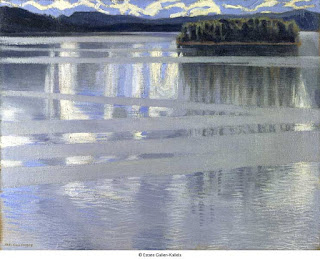
Akseli Gallen-Kallela (1865-1931) Lake Keitele (1905) oil on canvas, 53 x 66 cm., National Gallery, London.
Some of the landscape paintings reflected environmental concerns (such as clear-cutting of forests) as well as nationalistic ones, as did paintings illustrating the national epic, the Kalevala. The Kalevala’s collection of folk poetry was only published in 1835, a couple decades after the Grimm brothers published German folk tales, but it became a central part of the invented narrative of Finnish identity. The exhibition included a significant group of Gallen-Kallela’s large Kalevala paintings, which are about as appealing to modern tastes as Remington’s Western fantasies or Paul Delaroche’s paintings of Joan of Arc. The exhibition was accompanied by a very good catalogue whose essays give a broad introduction to Finnish painting, most particularly Ville Lukkarinen’s on “Art and National Identity.” The catalogue is fully-illustrated and included a number of photographs of the artists, sometimes at work in studios or en pleine air, although the quality of the printing does not do justice to the paintings and placing the page numbers in the gutter makes it difficult to navigate.
In Praise of Shadows at the Irish Museum of Modern Art
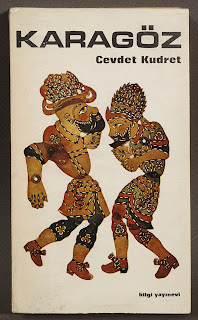
Kudret Cevdet, Karagöz. Cilt I, Ankara, 1968, Courtesy ELIA in attesa risposta da ELIA, Photo Spiros Panayotopoulos. These folk puppets formed the conceptual basis of the exhibition
In Praise of Shadows at the Irish Museum of Modern Art (organized jointly with the Istanbul Museum of Modern Art and the Museum Benaki, Athens) is really three loosely-related exhibitions bundled together, and if I’m not convinced that the curator has truly justified their relationship to one another, they are interesting enough to ignore the loose ends.
First is an exploration of in the popular shadow theater of Turkey known as Karagoz (which derives from Egyptian shadow theater which itself is probably indebted to the Javanese art form) and its influence on shadow puppetry in Greece. Karagoz involves stock characters and improvisation within a conventional format, much as do Punch and Judy shows. The Turkish form included scathing political referents, despite the usually repressive authoritarian rule. The exhibition included puppets and videos of their performances.
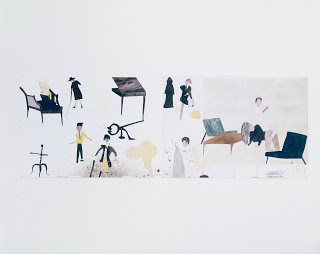
The second section consists of two early film animators: the German Lotte Reininger, whose often Orientalizing feature-length narratives using shadow figures consciously drew from Turkish examples, and Ladislas Starewich, whose peripatetic career (in Lithuania, Russia and France) produced narrative films enacted by puppets of his own making. We were shown silhouettes, puppets and films.
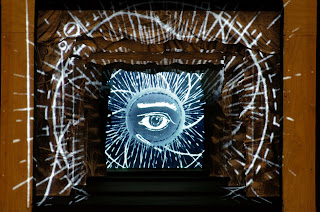
William Kentridge, still from Preparing the Flute Theatre, 2005, Video projection on wooden stage, 240 x 155 x 118 cm, Gandar Collection Ltd
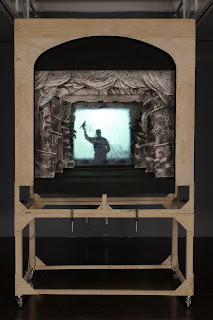
William Kentridge, still from Preparing the Flute Theatre, 2005, Video projection on wooden stage, 240 x 155 x 118 cm, Gandar Collection Ltd
The third part of the exhibition featured eight contemporary artists who can most properly be connected not through an interest in shadow puppetry but rather through the common use of narrative created variously with silhouettes, puppets, drawn and painted imagery, all with a clearly hand-made emphasis. They not only reject the current use of computers in animation but also the sophisticated illusion of movement in early hand-drawn films. They all use conscious artifice to tell stories that function as metaphors, parables or dream-like inventions. They also toy with art forms associated with children to address subjects that are most decidedly adult, perhaps acknowledging Bruno Bettleheim’s suggestion that the original purpose of fairy tales was to introduce children to subjects such as cruelty, violence and sexuality. The artists are Haluk Akakce, Nathalie Djurberg, William Kentridge, Katariina Lillqvist, Jockum Nordstrom, Christina Soulou, Andrew Vickery and Kara Walker. If readers notice a certain overlap with The Puppet Show at the ICA, Philadelphia last year it is an indication of their very similar intentions.
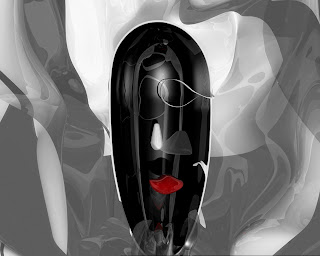
Haluk Akakçe, still from Garden, 2007, Single channel video, color with sound, 6′ 34”, Courtesy Max Hetzler, Berlin


